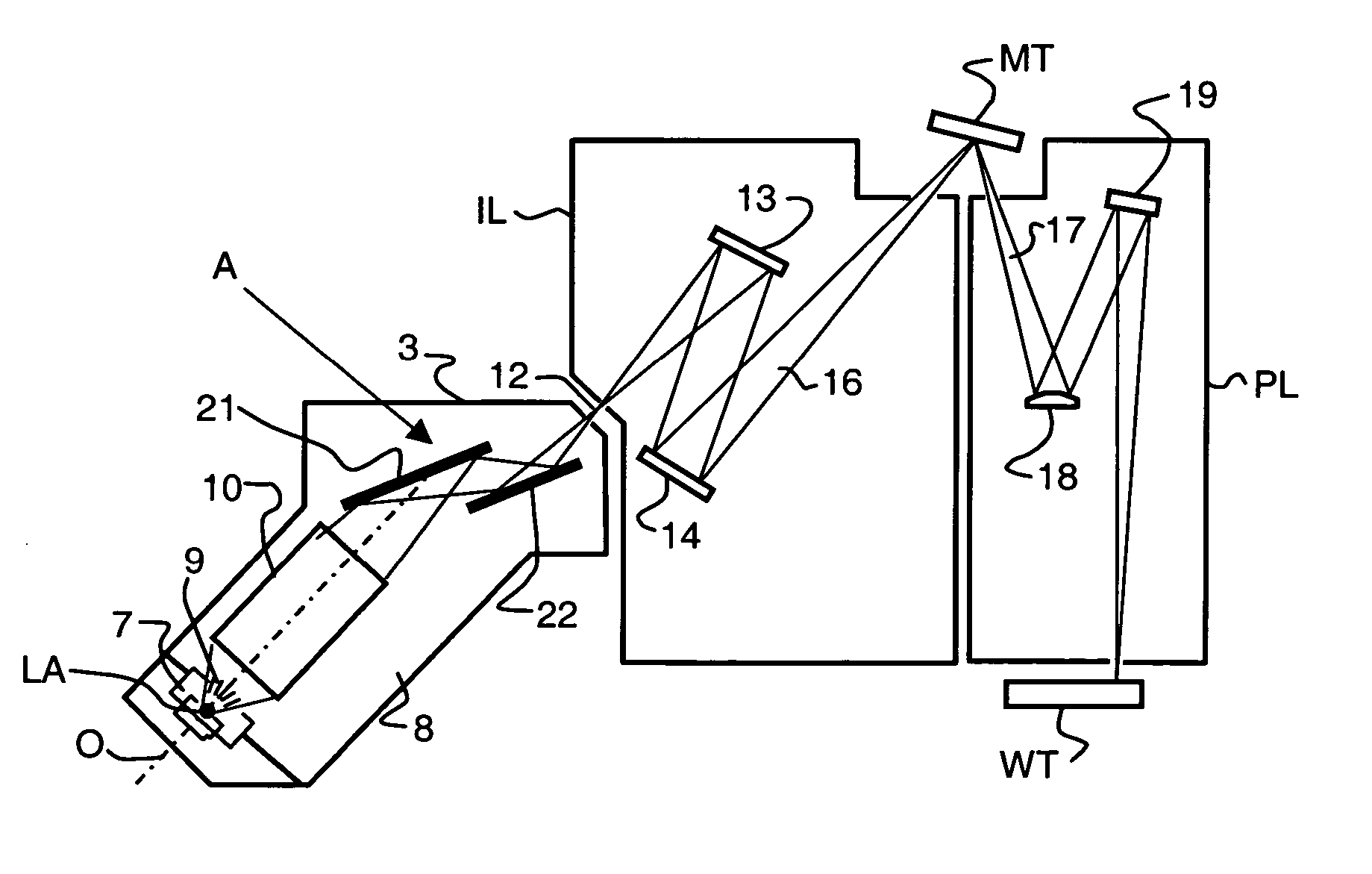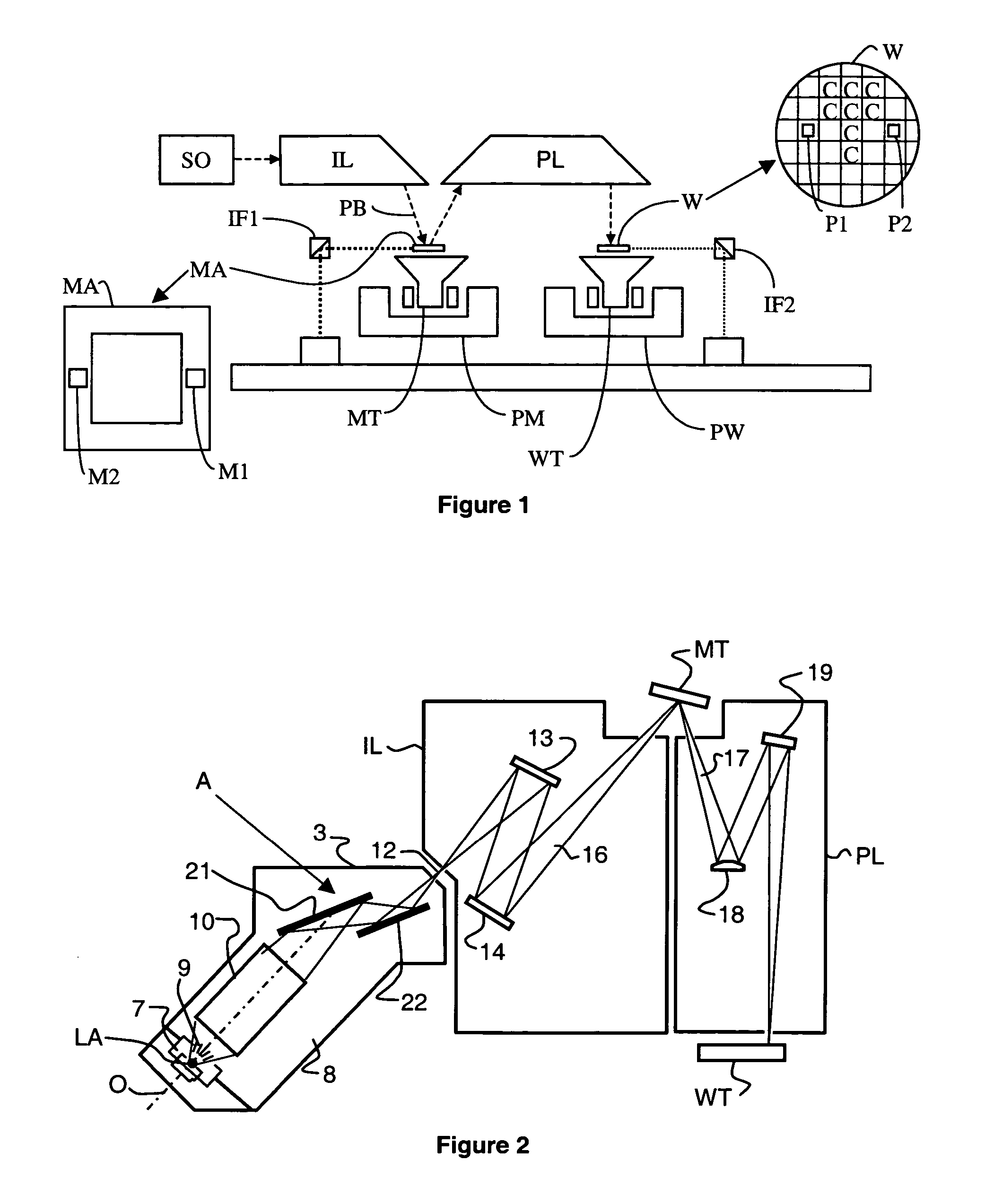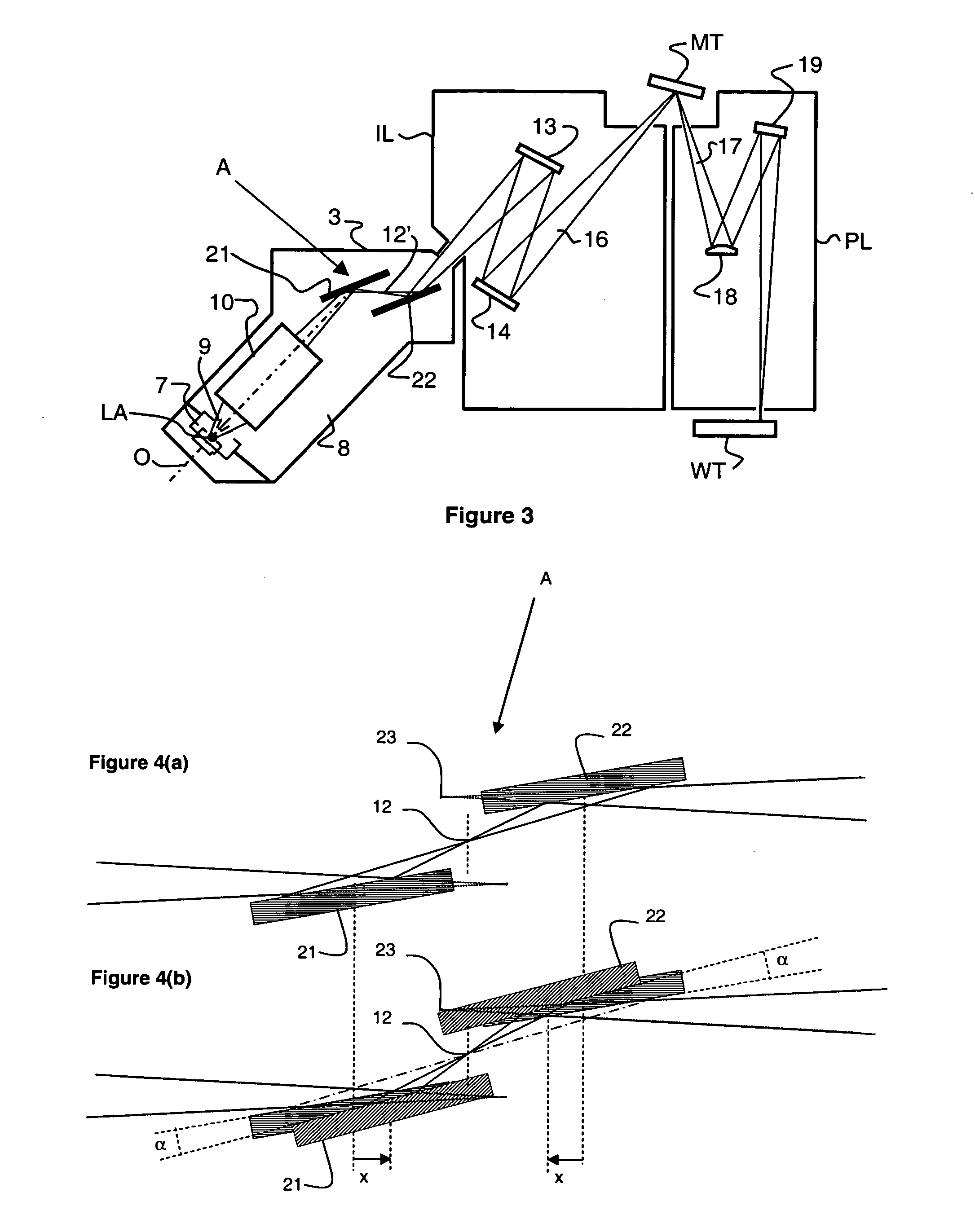Lithographic apparatus, device manufacturing method and variable attenuator
a technology of variable attenuator and lithographic apparatus, which is applied in the direction of cement mixing apparatus, printing equipment, instruments, etc., can solve the problems of adversely affecting the operation of the rest, adversely affecting the throughput and yield of wafers, and insufficient to maintain the required high dose accuracy at the wafer and high wafer throughpu
- Summary
- Abstract
- Description
- Claims
- Application Information
AI Technical Summary
Benefits of technology
Problems solved by technology
Method used
Image
Examples
Embodiment Construction
[0033] While the following description refers to specific embodiments of the invention, it will be appreciated that the invention may be practiced otherwise than as described below. The description is not intended to limit the invention.
[0034]FIG. 1 schematically depicts a typical lithographic apparatus. The apparatus comprises: [0035] an illumination system IL for providing a projection beam PB of radiation (e.g. UV or EUV radiation). [0036] a first support structure (e.g. a mask table) MT for supporting patterning structure (e.g. a mask) MA and connected to first positioning means PM for accurately positioning the patterning structure with respect to item PL; [0037] a substrate table (e.g. a wafer table) WT for holding a substrate (e.g. a resist-coated wafer) W and connected to second positioning means PW for accurately positioning the substrate with respect to item PL; and [0038] a projection system (e.g. a reflective projection lens) PL for imaging a pattern imparted to the pro...
PUM
| Property | Measurement | Unit |
|---|---|---|
| angles | aaaaa | aaaaa |
| angles | aaaaa | aaaaa |
| angles | aaaaa | aaaaa |
Abstract
Description
Claims
Application Information
 Login to View More
Login to View More - R&D
- Intellectual Property
- Life Sciences
- Materials
- Tech Scout
- Unparalleled Data Quality
- Higher Quality Content
- 60% Fewer Hallucinations
Browse by: Latest US Patents, China's latest patents, Technical Efficacy Thesaurus, Application Domain, Technology Topic, Popular Technical Reports.
© 2025 PatSnap. All rights reserved.Legal|Privacy policy|Modern Slavery Act Transparency Statement|Sitemap|About US| Contact US: help@patsnap.com



